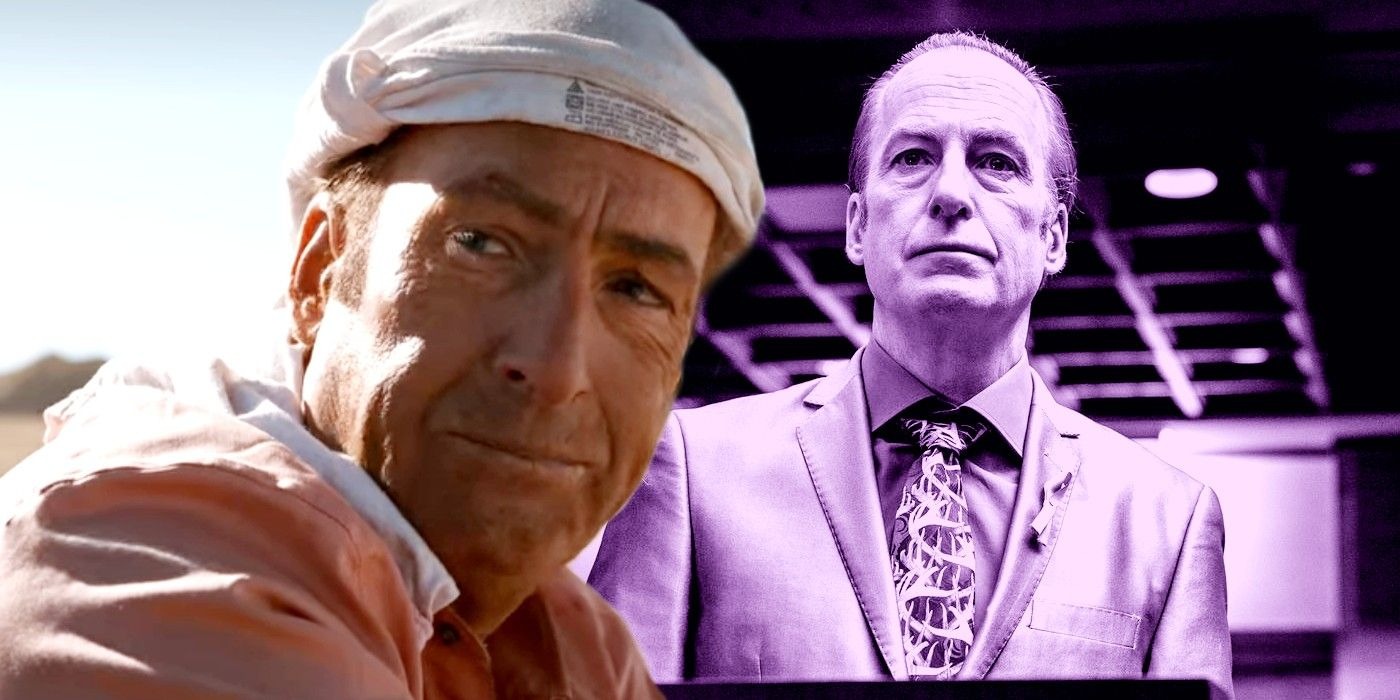The conclusion of Better Call Saul secured its place as a television masterpiece, standing tall alongside Breaking Bad and offering a perfect ending to the journey of Jimmy McGill (Bob Odenkirk), who eventually became Saul Goodman.
The series focused on the notorious lawyer’s transformation, tracing his path as he aided Walter White (Bryan Cranston) in building his drug empire. The storyline delves into the backstory of this criminal lawyer, portraying his evolution into Saul and intertwining it with his post-Breaking Bad journey as Gene Takavic in Nevada.

A tale of redemption and consequences wrapped up with precision
Season 6 of Better Call Saul served as a flawless wrap-up, not just for its plotline, but also for the broader Breaking Bad universe—at least for now. Kim Wexler (Rhea Seehorn) finally gets the emotional release she’s longed for, and Jimmy faces the repercussions of his actions.
Even side characters from both shows make an appearance, providing closure in scenes reminiscent of Breaking Bad. The finale is dramatic, intense, and full of tension, but it also offers moments of hope, delivering a well-rounded and satisfying conclusion.
The Finale Begins with Jimmy on the Run
The final episode starts with Jimmy fleeing after Marion (Carol Burnett) discovers his true identity as Gene and calls the police. Before he is caught, flashbacks to important moments from both Better Call Saul and Breaking Bad shed light on Jimmy’s internal turmoil.
These flashbacks reveal his deep guilt, particularly over his betrayal of Marion, setting the stage for his eventual confession in court.
The Turning Point: Why Jimmy Finally Confesses in Court
Towards the end of Better Call Saul, a change in his mindset changes everything. When he gets his moment in court, he takes a bold step by confessing everything in a stunning scene. His redemption begins after hearing that Kim has come clean, and it is only during the flight to New Mexico that Jimmy decides to reveal the truth.
When he gets his moment in court, he takes a bold step by confessing everything, Jimmy works out a deal to secure a seven-year sentence, but an alteration in his mindset changes everything. When he gets his moment in court, he takes a bold step by confessing everything in a stunning scene.
His redemption begins after hearing that Kim has come clean, and it is only during the flight to New Mexico that Jimmy decides to reveal the truth.
Kim’s selflessness triggers a critical moment in Jimmy’s journey. Through Bill, Jimmy learns that Kim not only signed a legal affidavit related to the Howard Hamlin incident but also showed it to Howard’s widow, opening herself to potential lawsuits.
This act of selflessness finally prompts Jimmy to take responsibility, and he decides to confess, albeit covering up some details about Kim’s involvement in the Howard scandal.
The Final Act: Saul Goodman’s End and Jimmy’s Redemption
In court, Jimmy steps forward as Saul Goodman, dressed in his usual flamboyant suit and embodying the arrogant persona that defined him. This is Saul’s last stand, a dramatic farewell to the character. As Jimmy confesses, Saul begins to fade away, replaced by the person Jimmy once was.
A critical moment arrives when Jimmy admits his role in Heisenberg’s operation, turning to Kim for approval. Her stoic expression makes him realize he hasn’t fully atoned for his actions.
Returning to the podium, Jimmy confronts his deepest regrets, particularly the trauma of his brother Chuck’s suicide, a pain he had never properly addressed. With a final act of redemption, he corrects the judge when she calls him “Saul Goodman,” effectively killing off the criminal persona once and for all.
This moment ties into the Better Call Saul Season 6 finale title, “Saul Gone,” symbolizing the end of the man he once was. When Jimmy looks at Kim, her expression has softened.
It is a look of pride and relief, signaling that Jimmy has shed his burdens and completed his transformation into a man who is no longer weighed down by past mistakes. This marks the final stage of his redemption.
Kim Wexler’s Ending: Hope in the Middle of the Struggles
Kim Wexler’s fate after Breaking Bad is far from ideal. Her life is characterized by a dull job that doesn’t utilize her talents, and she struggles to make decisions for herself.
By the time Better Call Saul ends, Kim is still in a difficult place, as demonstrated in a scene where she can’t even choose between two restaurant options. However, the show offers a glimmer of hope for her. Kim finds solace in volunteering at a free legal clinic, reminiscent of the pro bono work she did earlier in the series.
Though Kim is still reeling from her past mistakes, the clinic represents her first step toward healing. Her work with those who can’t afford legal help suggests that she may be beginning to reconnect with the aspects of her life that once gave her purpose.
While Kim’s life isn’t conventionally happy, this new path signals the possibility of a brighter future. The show doesn’t confirm whether Kim faces legal consequences due to her involvement in the Howard Hamlin case, nor does it address whether she is sued by Cheryl Hamlin.
However, it hints that Jimmy’s imprisonment might save her from facing a costly lawsuit. The final scene with Kim, having traveled far to see Jimmy, shows that while she may not be financially struggling, the unresolved issues between them remain.
Jimmy’s confession was an act of redemption, not to save Kim, but to allow her to walk her path without being tied to his mistakes. Two small moments suggest that Jimmy and Kim’s relationship is healing.
The cigarette burns in color, signifying a break from the bleak Gene timeline, and when Jimmy gives Kim the classic “gun fingers” gesture, she responds with a subtle yet important hand gesture of her own, signaling their unspoken connection.
A New Beginning for Jimmy
Better Call Saul’s conclusion is not the happiest, it’s clear that Jimmy has redeemed himself. In a flashback from leaves audiences to conclude that Jimmy’s life will continue behind bars. The final shot of Kim walking away signifies the last time they will see each other.
While the conclusion is not the happiest, it’s clear that Jimmy has redeemed himself. In a flashback from Better Call Saul, Chuck’s words resonate with the audience: “There’s no shame in going back and changing your path.” Jimmy’s final act reflects this sentiment, showing that he has finally accepted responsibility for his actions.
Themes of Better Call Saul Season 6: Consequences, Guilt, and Redemption
The themes explored in Better Call Saul Season 6 are integral to its storytelling. While the show can be entertaining on a surface level, it also delves deeply into the themes of consequences, guilt, and redemption, shaping both the characters’ journeys and the show’s conclusion.

The season reveals how Jimmy and Kim’s actions lead to remarkable consequences, particularly in the death of Howard Hamlin. What begins as an attempt to destroy Howard’s case ends in tragedy, showing that their actions had unintended, severe consequences.
Guilt plays a crucial role in both characters’ lives. Kim, overwhelmed by guilt, distances herself from Jimmy. She believes she doesn’t deserve happiness and lives a life of self-punishment, helping others but never allowing herself to feel good about it.
Jimmy avoids guilt altogether by embracing his Saul Goodman persona, using it as a shield to avoid confronting his feelings of responsibility. His return to crime is not just motivated by greed but by his attempt to avoid facing the truth.
The theme of redemption is explored through two major confessions. Kim’s confession to Howard’s widow is a moment of acknowledging her guilt, but it is not driven by a desire for redemption. She accepts that she cannot undo her mistakes, but she is no longer hiding from them.
Jimmy’s confession, however, is a turning point. By taking responsibility for his actions, he offers himself redemption while also allowing Kim to reclaim her path without being tethered to his past.
The Creators’ Perspective on the Better Call Saul Ending
The creators of Better Call Saul, Vince Gilligan, and Peter Gould, provided valuable insight into the development of the series finale. Gould, speaking to THR, explained how the finale differed from Breaking Bad’s violent ending, emphasizing that Jimmy’s story was always driven by words, not violence.
“His ending is not going to be violent in the same way. He’s a man of words, so of course the ending is gonna have words,” Gould said. One major concern was Kim’s fate, as she wasn’t part of Breaking Bad. Fans worried she might be a victim of Jimmy’s actions.
However, Gilligan revealed that they never seriously considered killing Kim off, as it didn’t feel right. Instead, Kim shares the finale with Jimmy, and her life, though disappointing, leaves room for hope.
Fans are divided on whether the ending is happy or sad, but Gould stressed that the creators focused on honesty rather than forcing a particular emotional response. “Where there’s life, there’s hope,” he said, reflecting the underlying theme of redemption in the series.
Don’t miss out on this emotionally charged movie streaming now on Netflix for subscribers.



